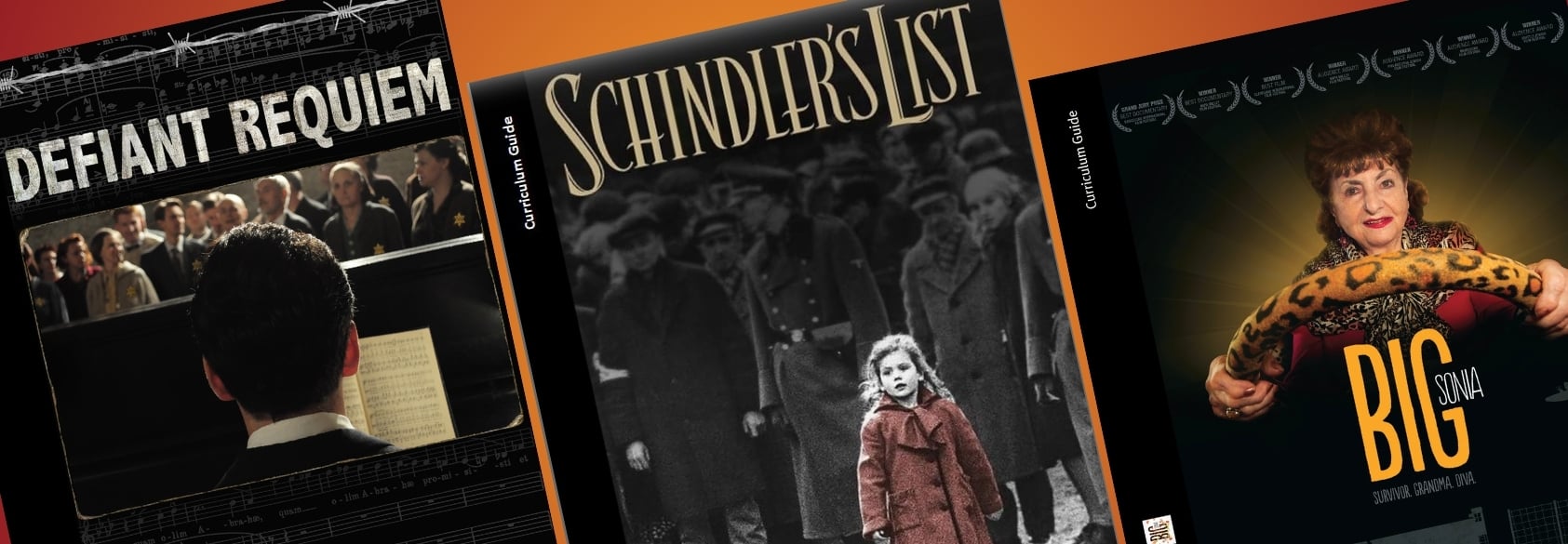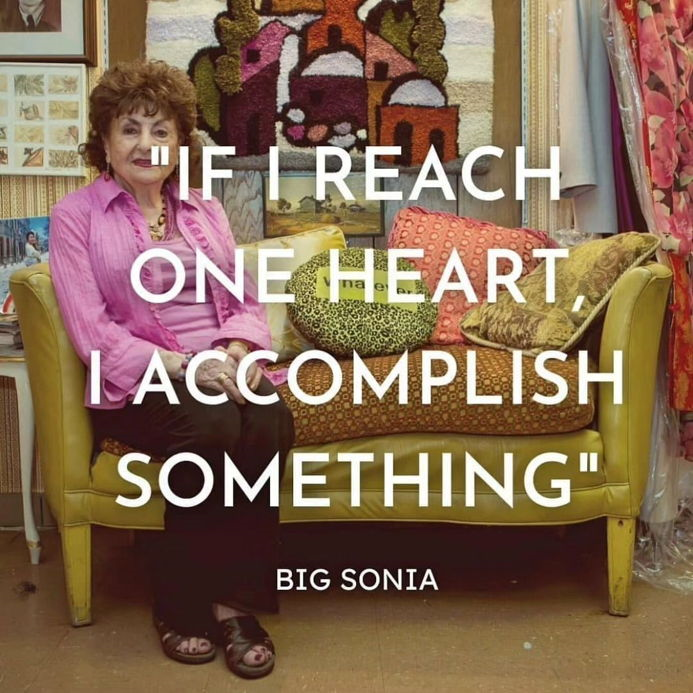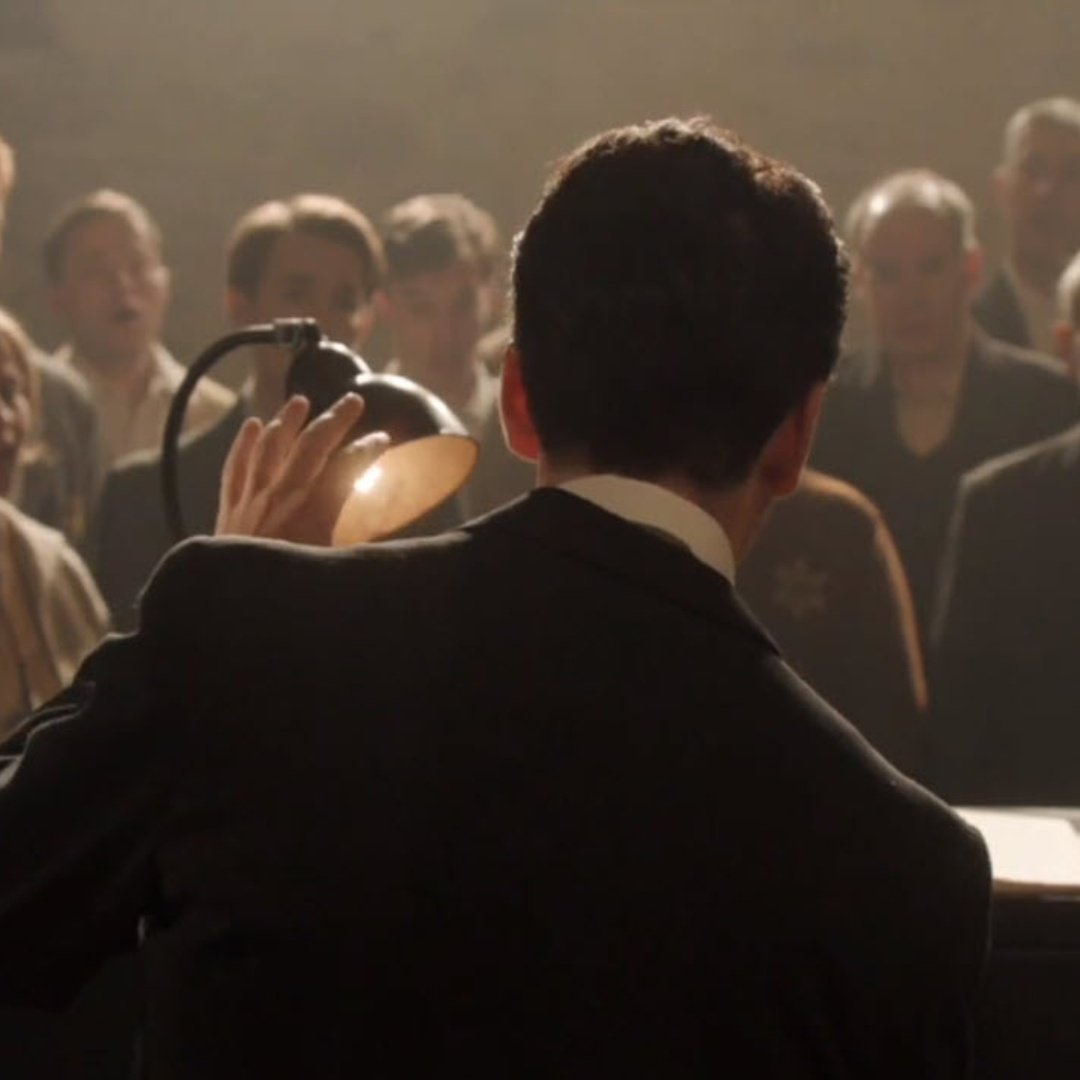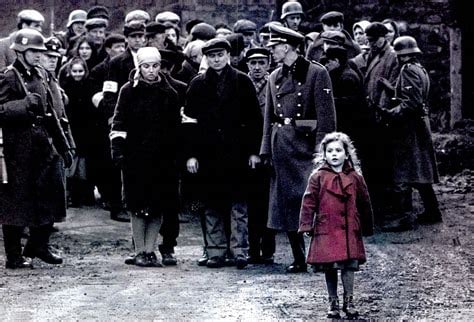Teaching Holocaust Education with Film
From award-winning documentaries to tools for fostering critical discussions, Journeys in Film's resources help educators teach the Holocaust authentically, inspire empathy, and honor the lessons of history.

Share
January 22, 2025
From award-winning documentaries to tools for fostering critical discussions, Journeys in Film's resources help educators teach the Holocaust authentically, inspire empathy, and honor the lessons of history.
Share
Teaching Holocaust education with film can transform history lessons in grades 6-12 into a moving experience that drives home the enormity of the genocide that took place during World War II. Six million European Jews and 5 million prisoners of war, including individuals from other marginalized communities, were deliberately murdered during the Holocaust. We recommend the following classroom-ready resources to make teaching about the Holocaust easy for teachers and a profound learning opportunity for students.
We have broken down these Holocaust education resources into four sections to make them as easy as possible to use in the classroom:
If you are new to teaching with film, the Journeys in Film Teacher Toolbox has everything you need to get started. This collection of free tools for teachers makes teaching with film easy and effective.
Our Share My Lesson webinar ”Anti-Bias Education: Using Media to Foster Critical Thinking and Combat Antisemitism and Islamophobia explores” anti-bias education resources along with strategies for how to handle these sensitive topics in the classroom.
For teaching holocaust education, genocide education, or other sensitive or polarizing topics, we recommend our printable handout, How to Facilitate Safe Classroom Discussions. Learn more about how to apply this resource in your classroom with our Share My Lesson article, Tips to Create Safe Spaces for Student Engagement.
Teach students to recognize and respond to antisemitism with our Antisemitism Today lesson. In this lesson, students learn about different forms antisemitism can take and how antisemitism is related to white supremacy. This lesson equips students with a framework to understand and analyze historic and contemporary antisemitism and provides a solid foundation for viewing Holocaust education films.
To help your students understand the impact and enormity of the Holocaust, we recommend teaching with first-person stories about individuals caught up in the horror of Nazism.
 Big Sonia is an award-winning documentary about Holocaust survivor Sonia Warshawski, who was a Jewish teenager living in Poland when the German army invaded in the 1930s. It details her experience in concentration camps and also as a Holocaust survivor and educator. Ultimately, it presents a story of resilience, hope and inspiration. The Big Sonia Curriculum Guide includes lessons that introduce the Holocaust in Poland and explore post-traumatic stress disorder and intergenerational trauma. This resource is for grades 7 and up. Many educators pair this film with Night by Elie Wiesel.
Big Sonia is an award-winning documentary about Holocaust survivor Sonia Warshawski, who was a Jewish teenager living in Poland when the German army invaded in the 1930s. It details her experience in concentration camps and also as a Holocaust survivor and educator. Ultimately, it presents a story of resilience, hope and inspiration. The Big Sonia Curriculum Guide includes lessons that introduce the Holocaust in Poland and explore post-traumatic stress disorder and intergenerational trauma. This resource is for grades 7 and up. Many educators pair this film with Night by Elie Wiesel.
 Defiant Requiem explores how prisoners in Terezín concentration camp used music and the arts to sustain their spirits and resist oppression. In addition to European history, the lesson plans in the Defiant Requiem Curriculum Guide cover English language arts, film literacy, fine arts, media literacy, music, music history, political science and psychology, making this a great film for project-based learning. This resource is for grades 6 and up.
Defiant Requiem explores how prisoners in Terezín concentration camp used music and the arts to sustain their spirits and resist oppression. In addition to European history, the lesson plans in the Defiant Requiem Curriculum Guide cover English language arts, film literacy, fine arts, media literacy, music, music history, political science and psychology, making this a great film for project-based learning. This resource is for grades 6 and up.
 Steven Spielberg’s Oscar-winning film Schindler’s List introduces students to the true story of Oskar Schindler, the German industrialist who saved the lives of 1,200 Jews during the Holocaust. This curriculum guide includes a compelling history lesson on the rise of Hitler in Germany. This resource is for grades 9 and up. Educators may want to pair the film with the book it was based on, Schindler’s List (original title: Schindler’s Ark) by Thomas Keneally, or Keneally’s account of writing the book, Searching for Schindler: A Memoir.
Steven Spielberg’s Oscar-winning film Schindler’s List introduces students to the true story of Oskar Schindler, the German industrialist who saved the lives of 1,200 Jews during the Holocaust. This curriculum guide includes a compelling history lesson on the rise of Hitler in Germany. This resource is for grades 9 and up. Educators may want to pair the film with the book it was based on, Schindler’s List (original title: Schindler’s Ark) by Thomas Keneally, or Keneally’s account of writing the book, Searching for Schindler: A Memoir.
Note that not all Holocaust Education media is created equal. For example, although the book and film versions used to be popular in classrooms, many Holocaust scholars have strongly criticized The Boy in the Striped Pajamas. We encourage teachers to make sure you are teaching with materials that represent the Holocaust authentically and accurately.
Learning about this horrific chapter of human history can understandably trigger big emotional responses in students. We have compiled a collection of tools to help students process big feelings. You may want to introduce these exercises during a class intermission or at the end of a class to help students get re-grounded and self-regulated. Learn more in our Share My Lesson article, Creating a Calm Classroom.
Holocaust education remains timely and urgent. We recommend incorporating Holocaust education films in your classroom all year round. Teachers, especially history and social studies teachers, may want to teach with holocaust education films on important dates in Holocaust history, such as Kristallnacht (Nov. 9-10) when the Holocaust began. Educators may also want to teach with Holocaust education resources on the following occasions:
We hope the resources we have shared here will make it easy for teachers to bring Holocaust education alive in the classroom: to honor those whose lives were lost in the Holocaust, to honor survivors and their families, and to foster remembrance and prevention—all year round.
Teach the Holocaust with confidence. Explore free lesson plans and resources to raise awareness and analyze its lasting impact.
Want to see more stories like this one? Subscribe to the SML e-newsletter!
